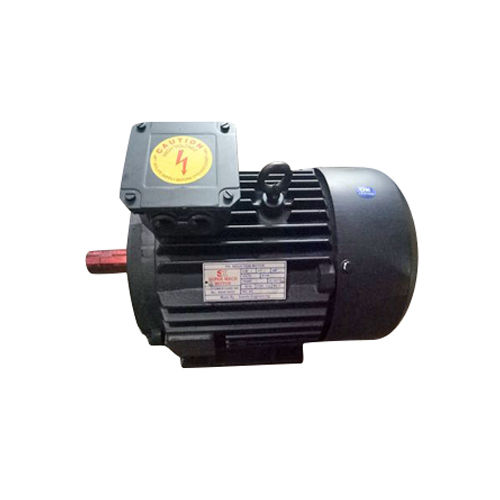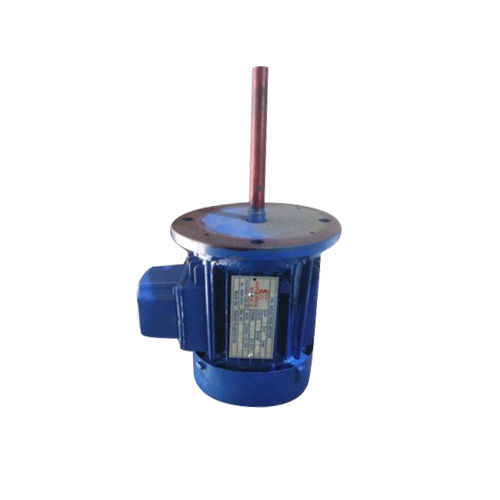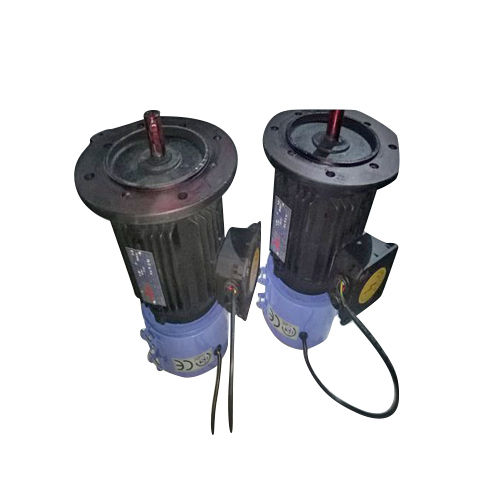Industrial Vibratory Motor
Product Details:
- Sealed Type Mechanical Seal
- Product Type Vibratory Motor
- Protect Feature Drip-Proof
- Phase Double Phase
- Starting Type Electric Start
- Color Grey
- Click to View more
Industrial Vibratory Motor Price And Quantity
- 14000 INR/Unit
- 10 Unit
Industrial Vibratory Motor Product Specifications
- Mechanical Seal
- Grey
- Vibratory Motor
- Drip-Proof
- Electric Start
- Double Phase
Industrial Vibratory Motor Trade Information
- Cash Advance (CA)
- 1000 Unit Per Month
- 10 Days
- All India
Product Description
A specialised kind of electric motor called an industrial vibratory motor, also called a vibratory motor or vibration motor, is used to generate vibrations in industrial machinery such vibratory feeders, vibrating screens, conveyors, or compactors. These motors were created with the intent of delivering predictable and regulated vibration for a range of material handling and processing applications.
The following are some essential qualities and traits of industrial vibratory motors:
1. Design: Vibratory motors are frequently lightweight and durable, built to endure the rigours of industrial situations. They frequently have a cylindrical or rectangular shape, a stator housing, an eccentric rotating mass (ERM) or unbalanced weight linked to the motor shaft, and any of these components.
2. Vibration Production: An industrial vibratory motor's main function is to produce controlled vibrations. As the ERM, or unbalanced weight, rotates, it generates an unbalanced centrifugal force, which causes an oscillating motion. The equipment or building is subsequently subjected to this motion, which causes vibration.
3. Vibratory motors allow for the adjustment of both amplitude (the size of the vibration) and frequency (the number of vibrations per unit of time). Based on the demands of the particular application, such as material flow rate or separation efficiency, this adaptability enables customisation.
4. Operation Reliability: Industrial vibratory motors are built to provide dependable, continuous operation. They are designed to handle the hefty loads, sweltering temperatures, and challenging working environments frequently found in industrial settings.
5. Energy Efficiency: Vibratory motors are normally built with excellent energy efficiency in mind, ensuring efficient vibration creation with low power usage. This effectiveness helps to lessen the impact on the environment and operating costs.
6.Vibratory motors are made to be simple to integrate into a variety of industrial systems and equipment. They frequently have standardised mounting patterns or flanges, which make installation and connection to the equipment simple.
Industrial vibratory motors are used in a variety of sectors, including construction, mining, food processing, pharmaceuticals, and recycling. For operations including material handling, sorting, transporting, compacting, screening, and separation, they are used.
To ensure optimum performance and compatibility with the machinery or system, factors like power rating, voltage needs, vibration amplitude and frequency range, operating environment, and application-specific requirements should be taken into account when choosing an industrial vibratory motor.
FAQ
1. What exactly is a commercial vibratory motor?
Ans - A specialised motor used to produce vibratory motion for a range of purposes is called an industrial vibratory motor, to be precise. This kind of motor produces a vibratory motion by using a rotating mass, also known as an inertial mass. Then, in a variety of industries, this motion is employed to process, move, or shake material.
2. How is a commercial vibratory motor operated?
Ans - Industrial vibratory motors generate vibration using a spinning mass. The spinning mass and a driving mechanism, such as a belt or gearbox, are connected to the motor. When the motor is turned on, the mass is made to rotate quickly, creating the vibration.
3. Why is employing an industrial vibratory motor advantageous?
Ans - Industrial vibratory motors have various advantages, including lower energy use, better precision, and longer lifespans. They offer a wider range of motion and a higher peak acceleration than conventional motors. They are also appropriate for jobs that demand quick pauses and starts, which makes them perfect for managing and controlling operations.
4. In what situations is an industrial vibratory motor typically used?
Ans - In a number of processes, including material conveying, sieving, screening, cleaning, mixing, and sorting, industrial vibratory motors are employed. Additionally, they are utilised in vibratory feeders, conveyors, packaging apparatus, testing apparatus, and manufacturing machineries.
5. How much weight can an industrial vibratory motor support at once?
Ans - The maximum load that an industrial vibratory motor can support will vary depending on the particular motor. The maximum load that may be handled safely ranges generally from 10 to 80 times the motor's rated power. You might need to use a motor with a greater power rating for applications with higher loads.
 |
SAKSHI ENGINEERING
All Rights Reserved.(Terms of Use) Developed and Managed by Infocom Network Private Limited. |







